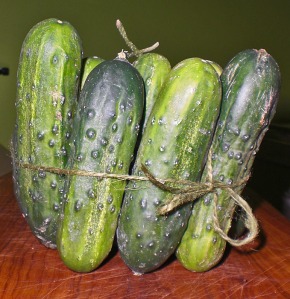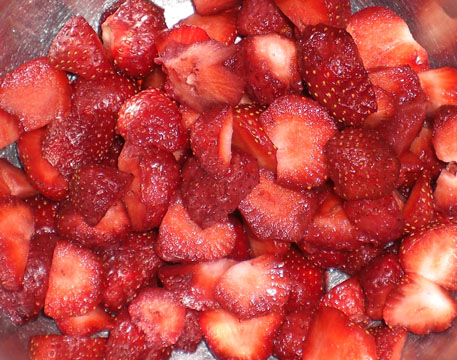 There is something so satisfying about biting into a crisp tangy pickle and nothing so disappointing as chomping down on a soggy one. There are many “tricks” of the trade to get that perfect “crunch” including commercial additives “Pickle Crisp” (which is really Calcium Chloride), adding a grape leaf to a jar, lime (the powdered calcium type not the fruit) or the fail safe method I use-blossom end off. So what does it all mean?
There is something so satisfying about biting into a crisp tangy pickle and nothing so disappointing as chomping down on a soggy one. There are many “tricks” of the trade to get that perfect “crunch” including commercial additives “Pickle Crisp” (which is really Calcium Chloride), adding a grape leaf to a jar, lime (the powdered calcium type not the fruit) or the fail safe method I use-blossom end off. So what does it all mean?
The old-fashioned method of using pickling lime was generally a safe method of ensuring your pickles would stay crisp. But it was labourious, as it had to be washed off at least three or four times prior to pickling as the solution is rather alkaline which counteracts with the acidity of the vinegar. Alum (aluminum potassium sulfate) was another additive used but now discarded as it sometimes left pickles tasting bitter.
Another method popular with our grannies was putting a grape leaf in the jar. Why a grape leaf? The National Center for Home Food Preservation suggests it inhibits the enzyme which makes the pickle soggy. Grape leaves contain tannins which some suggest is the compound which affects the texture of the pickle. But unfortunately results are often unreliable.
One sure fire way I have found is to cut the blossom end off of the cucumber. This is where the “soggy” enzyme resides. If you are unsure which end is up (blossom ends are generally a little paler with a white/tan circle), it doesn’t hurt to cut off both ends… Continue reading


You must be logged in to post a comment.